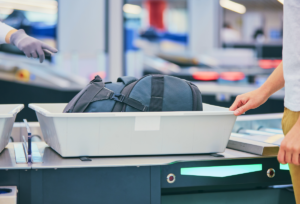1. Why do the lights dim at night?
This is perfectly normal, so don’t freak out! In fact, it’s better for your eyes if they don’t go from a bright surrounding to a dark surrounding. This is similar to when you’re in a car at night, you don’t have the inside light on whilst driving. After take off the cabin crew will switch the main lights back on however, cabin crew are there for your safety so always follow their instructions.
2. Reduction in noise from the engine after take-off
Airliners are constantly striving to be greener which will benefit the environment and their business. A plane generally takes off at full power and once airborne and at a safe altitude, the pilots bring the throttles back to a more eco-friendly setting, known as climb thrust. This reduces the fuel burn and is better for the engine, so don’t panic if you feel a dipping sensation when this happens.
3. Acceleration
When aeroplanes accelerate or slow down you may feel a dipping sensation. They are 3 tiny hairs in your ears which measure acceleration giving the impression that the aeroplane is moving up or down. This is just your mind playing tricks on you – the plane is not going up or down but just accelerating or slowing down.
4. The truth about oxygen masks
Oxygen masks are provided as a safety net if the cabin pressure falls in the aircraft. If this happens the pilots would descend to an altitude so masks are not required, which is around 10,000 feet. This provides more than enough oxygen to cover the time it takes for the pilot to reach a safe altitude, where they won’t be needed.
5. Winglets
The modern world we live in means technology is forever changing and so is the design of aircraft wings. Most aeroplanes have little extras added to their wing tips, which are different in size and shape. As engineers adapt planes to increase efficiency they often make small changes to the wings in a bid to improve them further. Each new style is tested and tweaked meaning we have different shaped wings depending on manufactures.
These winglets reduce the fuel burn of the aeroplane, making it more economical while increasing the range of the aeroplane. Overall, winglets reduce the drag of aircraft and allow for more efficient flying.
6. Flaps
Located on the rear end of the wing, flaps are important for take-off and landing. They provide extra lift which allows the aircraft to fly at a much slower speed during take-off and landing, and consequently results in a massive increase in drag. If aeroplanes didn’t have flaps they would need much longer runways.
7. The ‘ding’ before take-off and throughout the flight
This is to advise cabin crew that take-off is imminent. During this time the cabin should be secure so the aircraft can depart. The cabin crew also use ‘dinging’ to grab the each others attention. When duty free passes through the cabin they sometimes only have one of each item on the trolley so often run out. Crew also use a form of sign language for the staples such as tea, coffee and a tube of Pringles. Sometimes it’s like playing charades at 37,000 feet.
8. Why your ears don’t pop as often on a Boeing 787 Dreamliner?
The new Dreamliner from Boeing has a cabin altitude of 6,000 feet, which is about 2,000 feet lower than other flights. This is slightly kinder on the ears. The lower altitude also makes passengers feel less tired, more refreshed and hydrated.
9. Why hasn’t the Boeing 787 Dreamliner got window blinds?
To make the plane lighter they have done away with traditional blinds. The blinds are now controlled electronically by each passenger, this way they have control over how much light comes through the windows. The cabin crew control the blinds on take-off and landing as they need to be fully clear. If you’re flying on the Boeing 787 you’ll have a view of the horizon no matter what seat you’re in as the windows are so large.
10. Why store electronic items on take-off and landing?
A small portable device can emit powerful radio waves. So, to prevent them interfering with the aircraft navigation systems, airlines will ask you to refrain from using these. The interference sounds a bit like putting your mobile near a FM radio when receiving a call. There are several airlines in the USA who allow passengers to use their mobile phones right up until departure, but this is yet to make its way to the UK.
Have a look at our amazing all inclusive holidays and family holidays to long-haul destinations such as the Caribbean, Costa Rica, Thailand, Mauritius and more.
You may also like
flying





